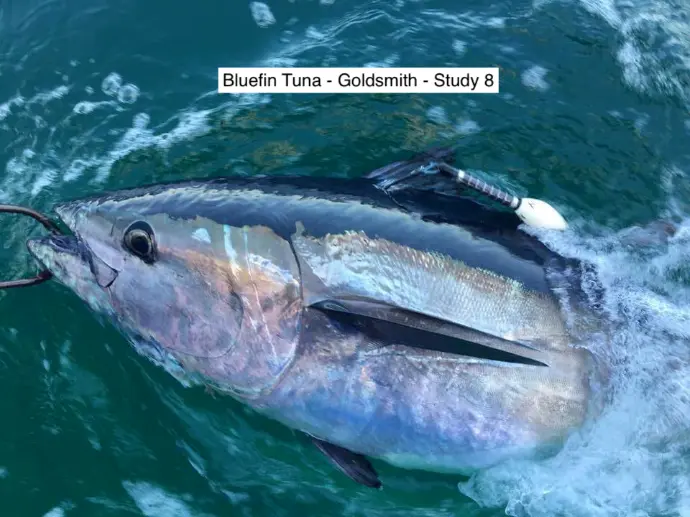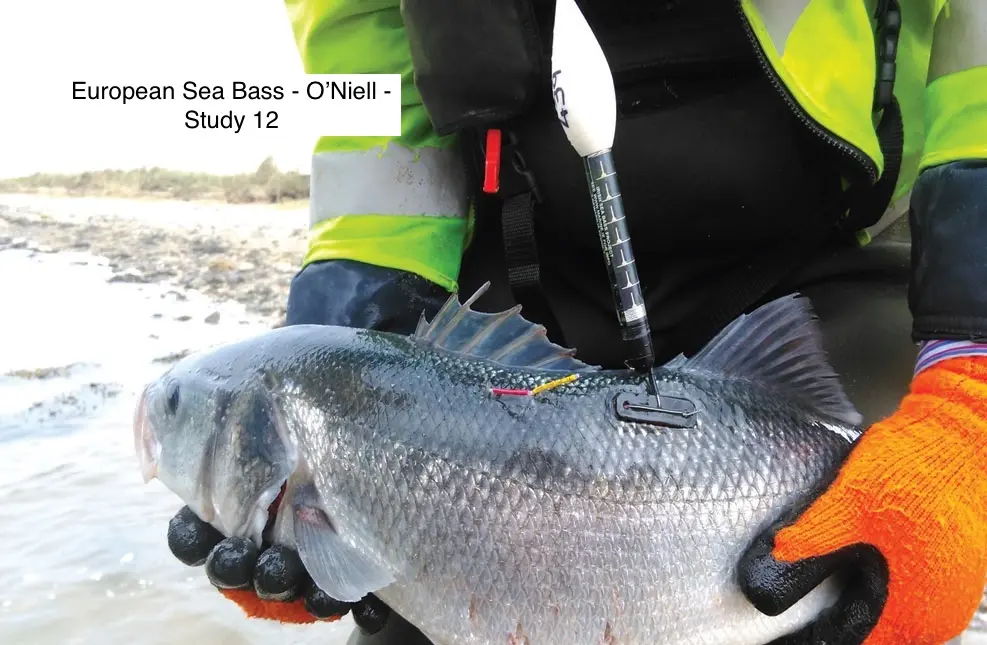SeaTag-GEO
Precision Migratory Tracking Pop-Up Satellite Tag
Product Overview
The SeaTag-GEO pop-up satellite tag is an ideal and very capable tool for migratory studies of both commercial and non-commercial species. It is the smallest pop-up satellite tag offered by any manufacturer. At just 40g, it is suitable for animals of as little as 1kg in weight. It is also the least expensive PSAT available. This means that with a given given budget you can purchase four to five times as many tags. And that of course translates to a much larger study size and greater confidence of the results. Yet despite its small size and low cost, GEO offers better and more robust position data than most tags.
With the strong reduction in PSAT tagging cost ($945-$1350 per tag depending on quantity), GEO can now provide an economic alternative to plastic ID ‘conventional tags’, while yielding significantly more data including migratory tracks and residency of the tagged animals.
Data Collection
The SeaTag-GEO collects a variety of data to track fish migration:
- Geomagnetic field values (3 axes) for improved latitude estimates
- Light measurements for longitude estimates and day length calculations
- Temperature readings (accuracy of 0.2°C)
- Noon time estimates
- Solar panel voltage (indicating light intensity)
This data is used to produce high-accuracy position tracks and pop-up positions. The tag's wrap-around solar panel serves as both a power source and a light sensor, providing uniform light measurements. The SeaTag-GEO transmits both raw data and daily averages for about two months after the programmed dates.
Specifications
High-Accuracy Positions & Tracks
Position tracks and pop-up positions are the central data product of GEO. The small tag’s technologies combine to produce better and more robust results than is possible with other PSAT:

- A built-in magnetometer provides better and higher confidence latitude estimates than is possible with light-only tags. The earth magnetic field has a strong intensity gradient in the north-south direction in most locations. Sensing that field provides good estimates and constrains the maximum realistic latitude error.
- The wrap-around solar panel also serves as the light sensor, providing much more uniform light measurements than the small, directional light detectors used on other tags. As a result, longitude estimates are very good.
- The tag uses solar power to transmit to Argos and will transmit whenever exposed to light. That means loss of pop-up position due to tag shedding or CDR (Constant Depth Release) failure is not a concern.
And, the tag will even transmit during brief surface intervals such as when a fish lingers at the surface. All this combines to position estimates that on average register at 35 nautical miles accuracy; much better than other tags. And, by relying on more sensory information and the nature of magnetic field sensing, the data confidence is improved.
Solar Power Improves Reporting Reliability
Tag survival and reporting is crucial in stock assessment studies because tag failure can bias a data set. If mistaken for animal mortality, a tag failure may result in overstating such events. If non-reporting tags are not accounted for, certain mortality modes may be under reported.
Thus, beyond providing power for ‘unlimited’ data transmission, the GEO solar architecture boosts reporting reliability. A battery powered tag may fail due to early battery depletion for any number of reasons, or even because the tag was caught in debris and the battery exhausted before transmission was possible.
By contrast, GEO will report whenever exposed to the sun. No matter if it concluded its mission and popped as scheduled, or sheds early: It will report as soon as it reaches the surface! That means reliable pop-up position reporting. It also means worries about battery depletion aborting your tags data return are a thing of the past.
The records to date include a drifter tag that went silent for over two years in south east Alaska, only to appear again in the Aleutians. Or, another that continuous to report over a year after pop-up, racking up almost 100,000 transmissions.
A Viable Alternative to Plastic ID Tags
Plastic ID ‘conventional’ tags are by far the most common tags for stock assessment work. PSAT tags were previously cost prohibitive, but with GEO its worth looking again.
While conventional tags costs a few dollars, their data recovery or ‘reporting rate’ can be low. For several bill fish fisheries, reporting rates well below 1% are common. Using GEO, reporting rates are much higher. While there is variability depending on hazards, a 75% reporting rate is a reasonable assumption. In such cases, conventional tags may require tagging on the order of 100 times as many animals to obtain data on the same number of animals.
At $945 per tag in volume, GEO has the economic advantage if the effective cost of conventional tagging is more than about $10 per animal! And, with GEO the value of the returned data is much higher. Pop-up positions, position tracks, animal residence in various regions and temperature data further help characterize a stock.
Safety Precaution
Please treat the SeaTag-GEO kinetic release as a loaded gun. While it is not as dangerous as a loaded gun, please use common sense and do not point at any part of the body or at anyone else. The approximate force of the kinetic release is around the force of a paint-ball gun. It is extremely important that you do not aim the kinetic release at the face, eyes or any other sensitive part of the body due to the potential for injury.
Please refer to the operator’s manual or MSDS for additional information.
HAZMAT Regulations
The following information is specific to the SeaTag-GEO kinetic release:
Per the “De Minimis” exemption of CFR 173.4B, the release kits can be shipped and transported legally including on passenger aircraft. You can carry any reasonable number of these kits, as the quantity exemption is per package. However, the exemption only applies to the kit with its unmixed components.
Once mixed you can no longer transport or ship the material legally without compliance with HAZMAT regulations. While use in carry-on luggage is in principal not against regulations, TSA has informed us that inspectors would likely not permit it because compounds could be mixed onboard.
Therefore, we recommend that you transport the kits in checked luggage only. We have traveled across the globe both domestically (USA) and internationally with the release kits without ever running into a problem (in our checked luggage).







